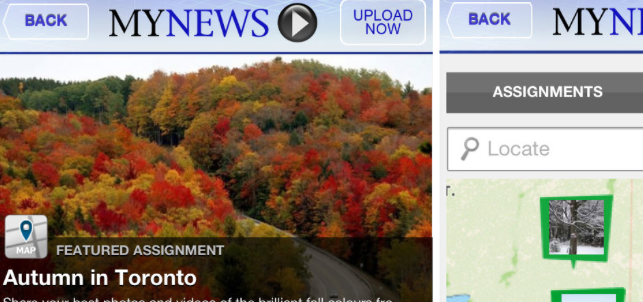FileMobile explains the point system that keeps citizen journalists contributing
by Jon Cook — Jan 23 '14
by Jon Cook — Jan 23 '14

The birth of “citizen journalism” is associated with the advent of the Internet, but the roots of it extend to the first printing presses, ham radio operators and hand-held video cameras.
The modern movement was launched in some ways in 1962 when non-journalist Abraham Zapruder inadvertently filmed the assassination of U.S. President John Fitzgerald Kennedy on his 8-milimetre camera.
Today citizen journalism is everywhere, from the Arab Spring uprising to the activist-led WikiLeaks news organization. Anyone with a cellphone and a Twitter feed can be an amateur reporter.
Traditional news outlets have felt the pinch as the trend siphons off readers and revenues. But media companies are fighting back and Toronto tech entrepreneur Steve Hulford is helping them do it.
With a background in fantasy sports, Hulford has designed a web-based publishing platform – Filemobile – that lets users upload their digital photos and videos in real time to major Canadian media properties run by CTV, CBC, CP24 and The Weather Network.
Filemobile’s User-Generated-News feature works in tandem with a mobile app that lets news producers – be they newspaper, radio, TV or online – geographically track app users and send them notifications – via text or e-mail – to “cover” an unfolding event and send photos, videos or tweets back to them for broadcast.
Millions of Twitter users are already doing this, but Hulford’s creation is a way for mass media to regain some lost eyeballs, while at the same time providing some instant celebrity to these citizen journalists.
“You get your 15 minutes of fame,” insists Hulford, who developed CTV’s proprietary MyNews app product that promotes users’ Twitter handles along with the photos and videos they upload. “It’s all things that appeal to the ego and motivate people to take part,” he added.
MyNews has been around since 2008 and has developed a community of more than 40,000 users and has generated upwards of 15 million page views. The app portion was launched late last year.
Hulford also partnered with U.S.-based gamification company Gigya to provide MyNews app users with point-based rewards for photos or videos that go viral.
Previously Hulford had created a rewards component for CBC News using a tool developed by Canadian gamification pioneer Nathon Gunn, the founder of Lightning Platform and the former head of web strategy for Prime Minister Paul Martin.
Hulford, who has dabbled in fantasy sports and sold previous startup PoolExpert to Rogers Communications in 2008, says gamification is still in its infancy, but expects the trend to grow much bigger as businesses incorporate it as a way to retain employees.
“Ultimately what catches their eye is being able to motivate employees and they could do some interesting things with that.”
User-generated content, or UGC, will also play a bigger corporate role going forward.
“The signs are that it’s going to be a really big part of the enterprise,” says Hulford, adding that marketing professionals are already employing sophisticated video to the point where: “Brand managers are going to have the skillset of a TV host and they’re going to be using rich media to communicate with each other inside an organization.”
By having their employees blog and create video, Hulford says businesses are “acting like publishers” and that is ultimately good for companies like Filemobile, which help curate the “massive fire-hose of content” that is being produced.
Initially Hulford launched the business in 2005 as a “skunkworks project” to try to take advantage of the social media revolution that was unfolding. The original concept was a content management system (CMS) to help consumers manage their Facebook and Flickr feeds. The market did not respond, so they quickly shifted focus toward the B2B crowd.
“As things have matured, we feel we’ve crossed the chasm,” says Hulford, who noted they have been profitable from the get-go and now charges clients anywhere from $500 to $30,000 a month. One of Filemobile’s biggest clients is USA Today, which has more than 100 local sites that register about 250 million unique users monthly.
Despite Twitter’s prevalence as a news portal, Hulford says just 7 percent of users consume their news through the social network. This leaves an opening for traditional news organizations to be curating content.
If Filemobile can help those companies remain relevant and stop the bleeding, it could end up being a very lucrative partnership.
“Naturally users build an affinity to a certain news brand and they’re following along and they’re watching.”

Apr 17 '14

Apr 16 '14

Apr 15 '14

Apr 11 '14
Copyright © 2016 CommerceLab


